How would widening Milwaukee's I-94 affect residents near the highway?
Milwaukeeans discuss potholes, noise pollution and public transit shortcomings as the Wisconsin Department of Transportation advances a $1.2 billion project to widen the I-94 East-West Freeway corridor.
Wisconsin Watch
June 5, 2023 • Southeast Region
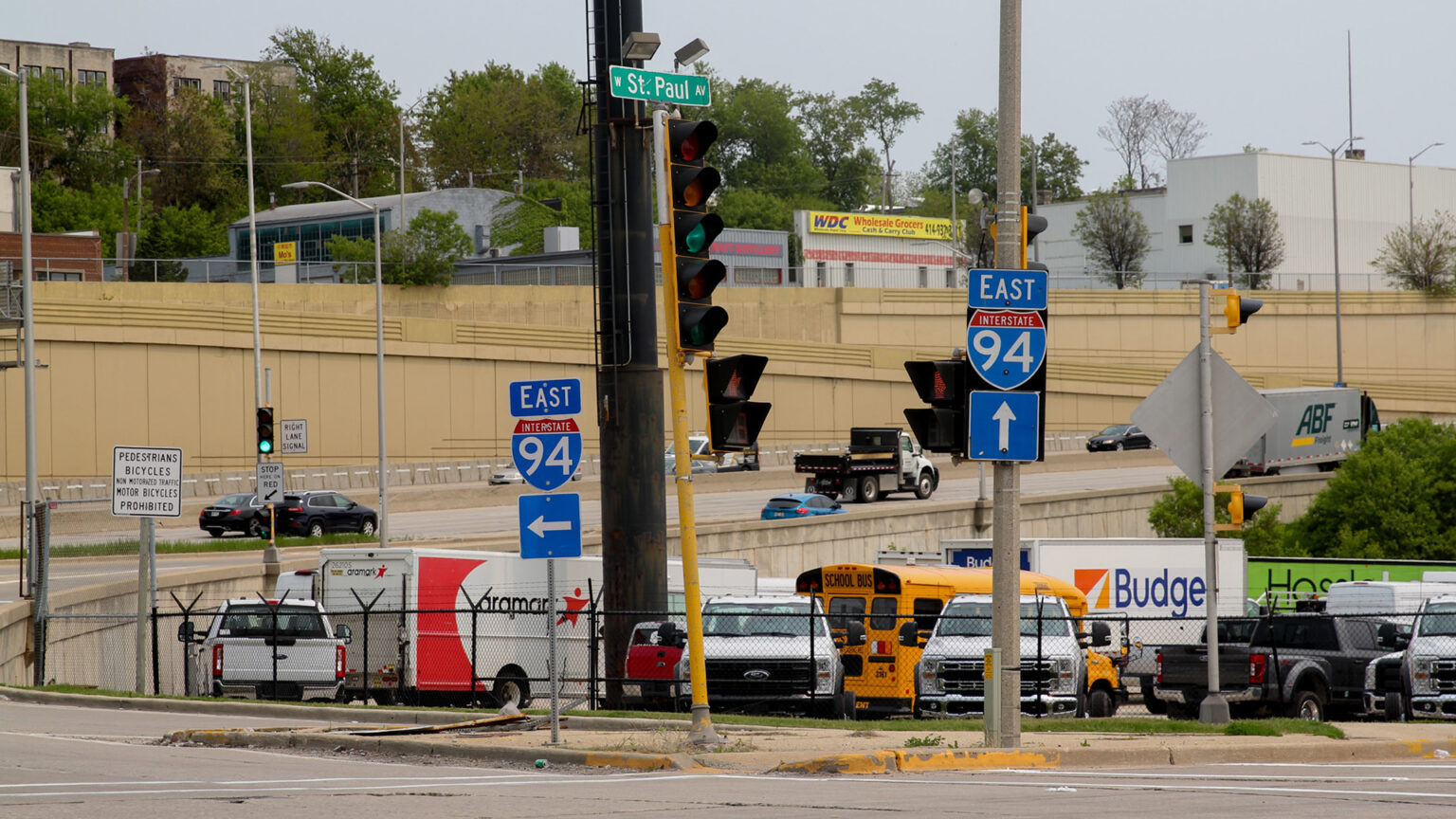
The Wisconsin Department of Transportation plans to expand a 3.5-mile segment of the Interstate 94 East-West Freeway corridor in Milwaukee. Many residents have pushed back, arguing it would benefit suburban commuters at the expense of Milwaukee residents. (Credit: Jonmaesha Beltran / Wisconsin Watch)

This article was first published by Wisconsin Watch.
After Esther Grams purchased her first business, she thought 2020 would be her year.
It wasn’t.
She navigated the effects of the COVID-19 pandemic like other business owners, and during that time, she realized she might have to relocate.
That year, Gov. Tony Evers revived a plan to widen a 3.5-mile segment of the Interstate 94 East-West Freeway corridor in Milwaukee between the Marquette and Zoo interchanges from six to eight lanes — calling it one of the state’s “most congested and dangerous roads.”
The plan would demolish the current home of Central Bark Milwaukee Westside, her franchised doggy daycare center near the freeway.
The Wisconsin Department of Transportation has tried to expand the 60-year-old freeway stretch between 16th and 70th Streets for over a decade, and in a previous plan, Grams’ business was slated for demolition.
Grams is among six business owners in Milwaukee’s Menomonee Valley who are in limbo — waiting for the state to finalize the $1.2 billion project and enter negotiations for real estate acquisitions. One home will also be demolished as well.
Evers and the Wisconsin Department of Transportation want to expand the interstate to decrease traffic congestion, high crash rates and repair aging infrastructure. But the highway cuts through the city, and opponents say the expansion will disproportionately disrupt Milwaukee’s West Side neighborhoods that the highway shaped six decades ago.
More than 20% of households near the corridor lack a car, and project critics say Wisconsin should invest more money in public transportation and less on expanding highways.
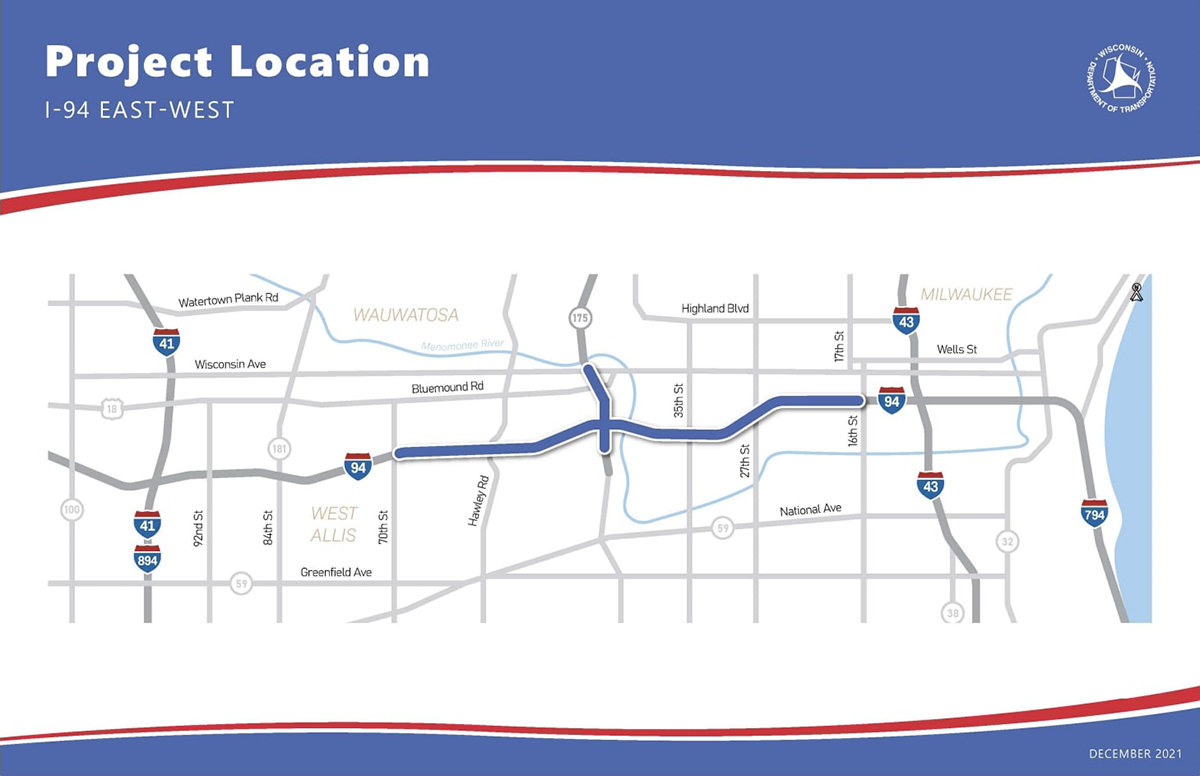
A Wisconsin Department of Transportation map shows the location of the proposal to widen a 3.5-mile stretch of Interstate 94 in Milwaukee as of December 2021. (Credit: Wisconsin Department of Transportation)
Through its News 414 collaboration, Wisconsin Watch spoke with five people who live and work in Milwaukee’s west side neighborhoods about how the expansion would affect them, and reviewed more than 50 testimonials and 100 public comments submitted to the state transportation department. While some residents support the expansion, many said it could either worsen or fail to address quality-of-life issues, such as noise from extra vehicles rushing down the highway and pothole-ridden local streets.
Meanwhile, expansion opponents endorse an alternative plan to repair the freeway without adding additional lanes while also boosting public transit investment.
“It’s unfortunate that the Department of Transportation and Gov. Evers have sidestepped the impacts to neighborhoods in favor of a quicker commute from suburbs to downtown,” said Milwaukee County Supervisor Peter Burgelis, who represents the neighborhoods near the freeway corridor.
Business owners near I-94 in limbo
Since 2004, residents have dropped their dogs off at Central Bark Milwaukee Westside, which sits on the corner of West St. Paul Avenue and North 25th Street near I-94.
The dog daycare was among 11 businesses originally slated for demolition in the state’s previous expansion plan in 2016, which called for creating a “double decker” freeway and adding one additional lane to each side.
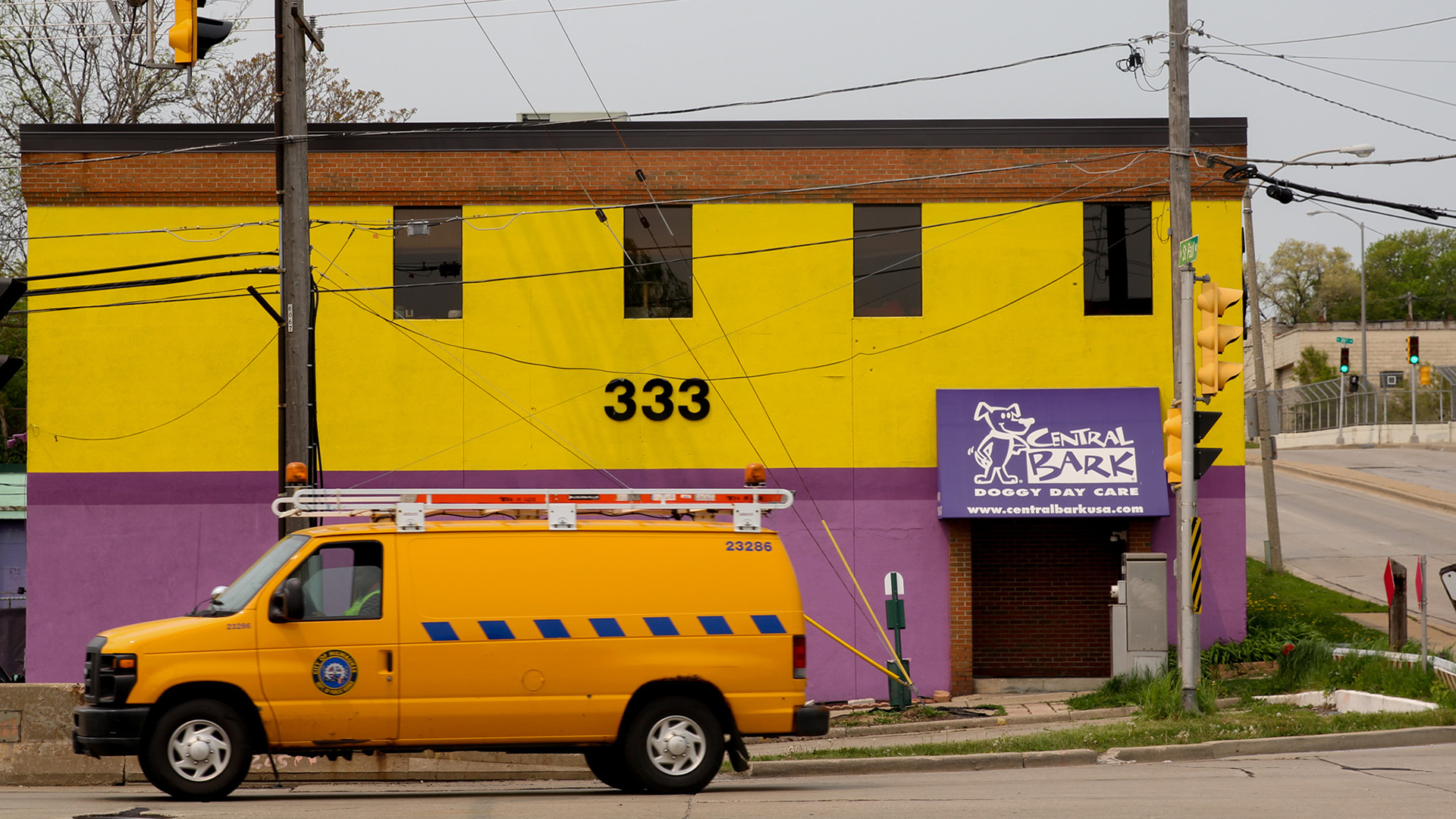
Central Bark Milwaukee Westside, a doggy daycare center in Milwaukee, has stood on the corner of N. 25th Street and W. St. Paul Avenue for nearly a decade, according to Esther Grams, the franchisee owner. (Credit: Jonmaesha Beltran / Wisconsin)
Republican Gov. Scott Walker halted the project in 2017, citing cost concerns before Evers revived his version. Construction is expected to begin in 2025.
Evers wants to modernize the 27th Street interchange near I-94 by adding left- and right-turn lanes to increase its capacity, according to the state Department of Transportation.
Grams managed the daycare and other Central Bark locations for 12 years before purchasing the franchise in 2019 from an owner looking to downsize. Grams said she likes her current location’s convenience for long-time customers who mostly live in the suburbs.
She knew about the possibility of the freeway project when purchasing the building but figured she had a few years to plan. She has been searching for new locations since late 2020.
“I’m like a super planner. I try to plan everything out like super far in advance,” the 30-year-old said, adding that planning is difficult because she lacks a timeframe of when she’ll have to move.

Esther Grams, 30, poses in her office at Central Bark Milwaukee Westside, a doggy daycare center, in Milwaukee on April 11, 2023. The center is one of six businesses slated for demolition due to the $1.2 billion Interstate 94 expansion project. Grams said she worries relocating will displace long-time customers. (Credit: Jonmaesha Beltran / Wisconsin Watch)
Moving might allow Grams to expand and grow her business, she said, but it could also displace loyal customers, and she wonders how the dogs will adjust to a new facility. She wants to keep existing customers by staying in the Menomonee Valley area, but her franchise agreement limits her relocation options.
Also facing demolition: Badger Ford Truck Center, a Ford dealership.
Badger Ford has operated near West St. Paul Avenue in Menomonee River Valley for 58 years. Its president told the Milwaukee Business Journal in 2021 that he would rather not move, and he had researched alternative sites years ago in response to the original plans to expand the highway.
The dealership declined Wisconsin Watch’s interview request.
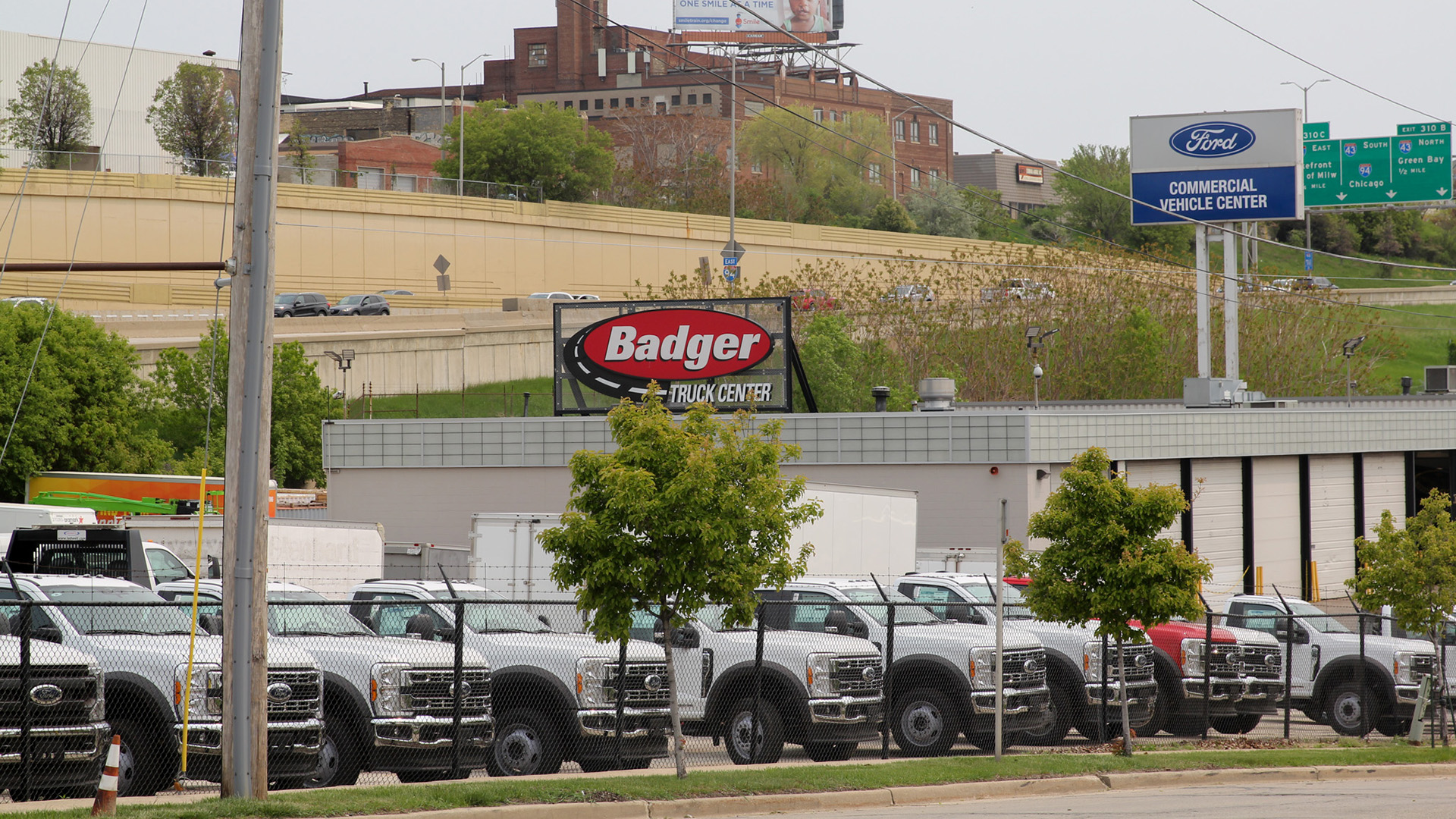
The Interstate 94 East-West Freeway corridor overlooks Badger Ford Truck Center on May 18, 2023. The dealership has operated near West St. Paul Avenue in Milwaukee’s Menomonee Valley for more than 50 years. (Credit: Jonmaesha Beltran / Wisconsin Watch)
Other businesses awaiting final decisions on the highway expansion to negotiate compensation for their properties include MKE Junk Junkies, a junkyard; Milwaukee Dog Training Club, which operates inside of Central Bark Milwaukee Westside; and a former Red Star Yeast warehouse and a private storage facility.
Menomonee Valley Partners, a nonprofit dedicated to redeveloping the Menomonee River Valley, has praised the state’s decision to proceed with the project and said it hoped the businesses could relocate in the area.
The nonprofit did not respond to Wisconsin Watch’s request for comment.
Burgelis said cutting off access during construction to 27th and 35th Streets, another interchange the state wants to modernize, will devastate small businesses in the area.
“The project is going to have real impacts to small businesses,” Burgelis said, adding that he hopes effects will not ripple to the surrounding neighborhoods.
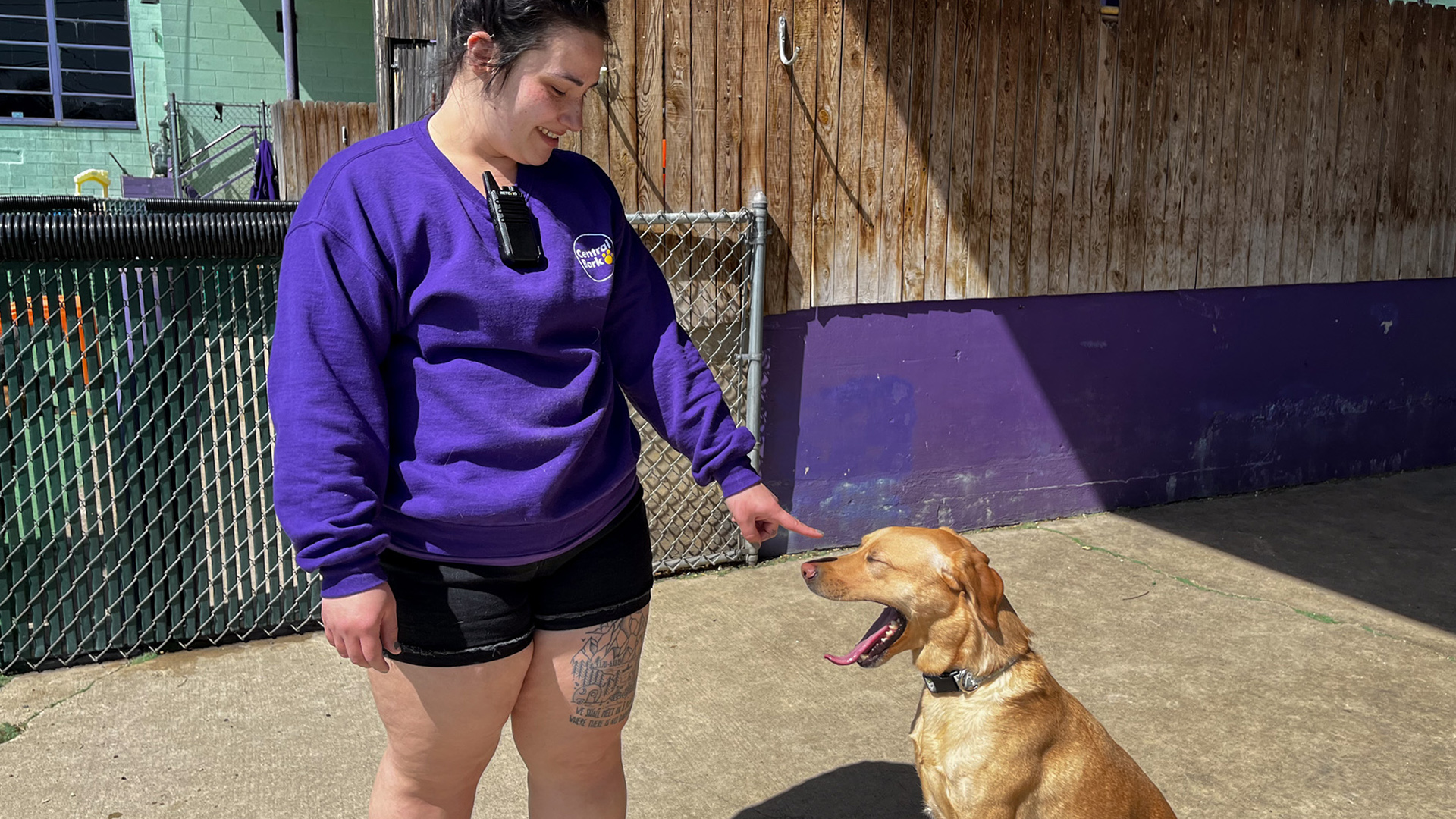
Alayna Kohloff, a groomer for Central Bark Milwaukee Westside, and her dog, Willie, play outside the doggy daycare center in Milwaukee on April 11, 2023. The center is one of six businesses slated for demolition due to the state’s planned Interstate 94 expansion. Owners are waiting for a final decision that will prompt negotiations for real estate acquisitions. (Credit: Jonmaesha Beltran / Wisconsin Watch)
The Wisconsin Department of Transportation did not respond to questions for this story, but it shared a statement with Wisconsin Watch that said: “We remain committed to developing infrastructure solutions that benefit the public for decades to come.”
“We’ve listened to the community and stakeholders, and their feedback played an important role for modifications to the preferred alternative,” the statement said.
Asked for comment, Evers’s office referred Wisconsin Watch back to the Wisconsin Department of Transportation, which said in an additional statement: “The Evers administration and Wisconsin Department of Transportation (WisDOT) care deeply about the impact of our infrastructure projects,” adding that the state remains committed to minimizing community impacts.
“The I-94 East-West Corridor Study is still undergoing the National Environmental Policy Act (NEPA) process, including active public involvement currently underway for the Supplemental EIS to help determine the final configuration of the project,” the statement said.
Highways shape Milwaukee neighborhoods
Freeways have a long history of plowing through Black- and brown-majority neighborhoods nationwide. That includes I-94, said Christine Donahoe, an ACLU of Wisconsin staff attorney.
The 3.5-mile freeway stretch at issue cuts through seven different neighborhoods: Avenues West, Merrill Park, Piggsville, Johnson’s Woods, Bluemound Heights, Story Hill and Menomonee Valley. Each was shaped by highways and some still feel the impact of “white flight” from decades past, according to a city of Milwaukee analysis.
The communities were cohesive and thriving before the state built the highways through them, Donahoe said.
The interstate cut a racial boundary through Milwaukee and prioritized the movement of people and goods from the city’s white suburbs to its downtown, said Amanda Merkwae, the advocacy director of the ACLU of Wisconsin, during a public hearing about the expansion in 2022.
One neighborhood the highway overlooks is Johnson’s Woods, a quiet area between South Hawley Road and South 70th Street. It was established in the late 1800s and transformed in the 1950s when Milwaukee County razed a strip of its northern blocks to build I-94.
Today, a metal gate separates the early-20th-century bungalows and two-story duplexes that sit near the freeway’s eastbound entrance ramp at 68th Street.
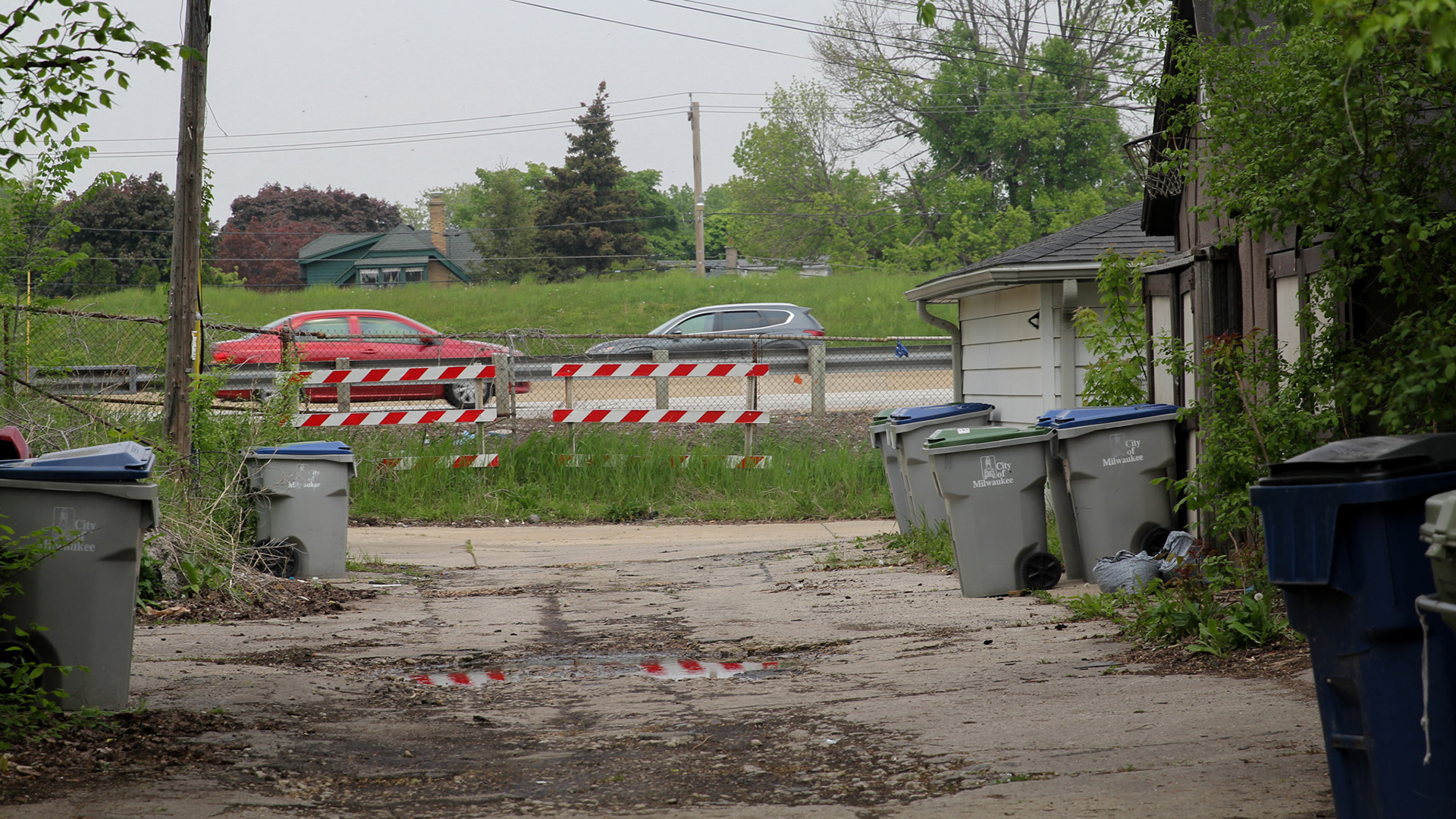
Cars drive on Interstate 94 along the northern edge of the Johnson’s Woods neighborhood in Milwaukee on May 18, 2023. Part of the neighborhood was transformed when the interstate was built six decades ago. Some residents in the area want the state to install a sound barrier along the freeway. (Credit: Jonmaesha Beltran / Wisconsin Watch)
To upgrade the ramp, the state plans to demolish one residence, a 1960s ranch-style house that a mother of four and her husband rented for four years. The family did not respond to Wisconsin Watch’s requests to comment.
The state’s original 2016 plan would have demolished three residential homes on the northern edge of Johnson’s Woods and five others.
“I’m glad that it’s only one, wish it was zero,” Burgelis said.
Sound barriers could reduce highway noise
One woman who has lived on the northern edge of Johnson’s Woods for 27 years shared concerns about noise pollution linked to the increasingly busy freeway corridor.
“I wish they put a wall up there if they’re not going to do nothing else — at least put a wall because it’s kind of noisy,” said the 72-year-old woman who declined to give her name.
Michelle Jacobi, a music instructor living nearby, agrees and wants a sound barrier for safety reasons. She recalled an incident in which a gunman shot a Milwaukee County sheriff’s deputy following a 2 a.m. traffic stop just south of I-94. A passenger and driver fled the car and ran into the neighborhood, where the passenger allegedly shot the deputy before fatally shooting himself.
“I think the sound barrier would have prevented that,” Jacobi said.
The Wisconsin Department of Transportation plans to build six noise barriers on both sides of the freeway. But property owners and residents must first vote on a barrier plan at a public meeting during the project’s final design, according to the department.
Barriers could limit the noise from additional traffic, but they could also obstruct the views of neighborhood residents, “and it’s not it’s certainly not the same neighborhood that it was before that gets installed,” Burgelis said.
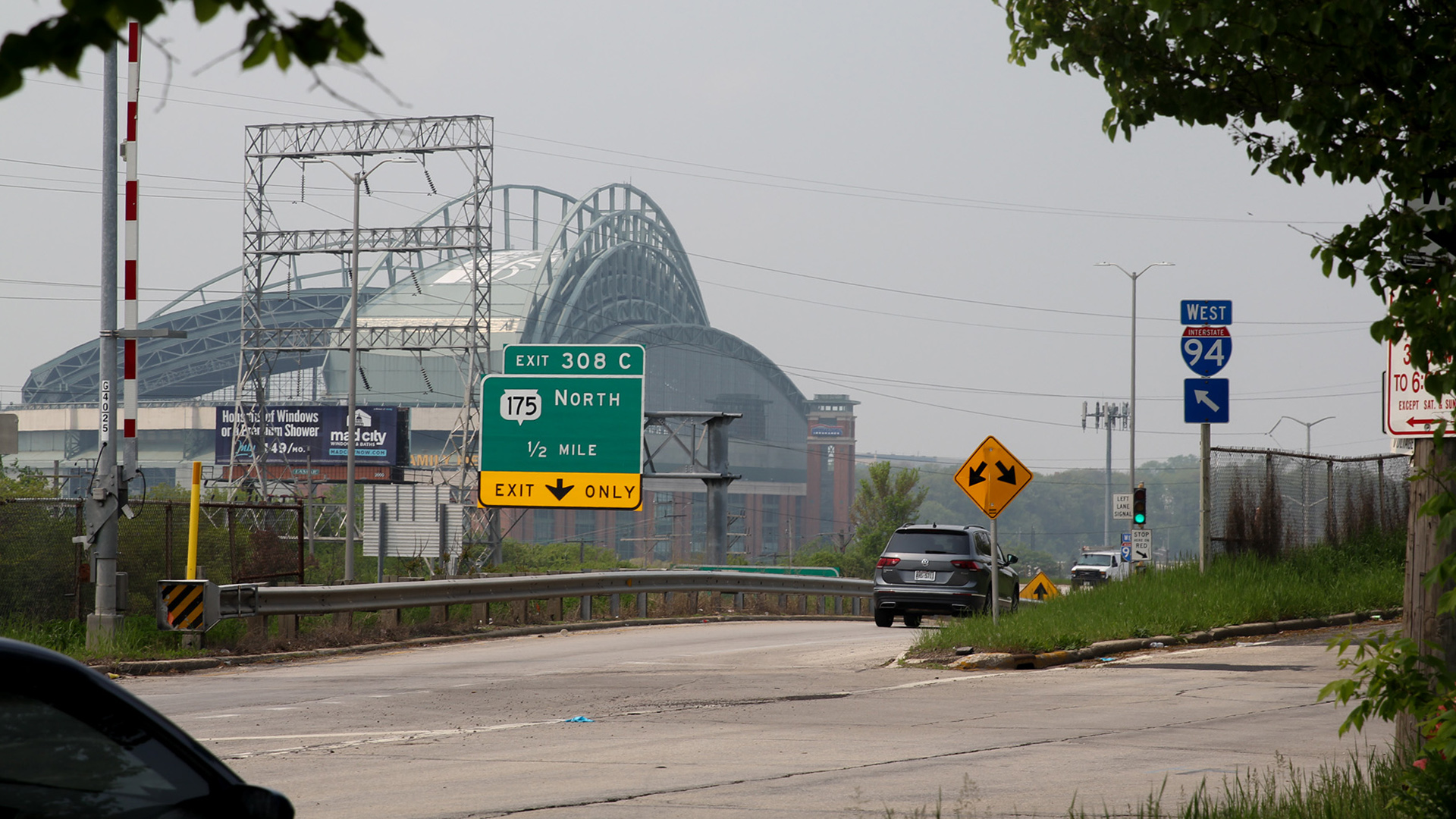
Wisconsin Gov. Tony Evers revived a plan to widen a 3.5-mile segment of the Interstate 94 East-West Freeway corridor in Milwaukee, between the Marquette and Zoo interchanges. The state wants to expand the freeway to decrease traffic congestion, high crash rates and fix aging infrastructure. (Credit: Jonmaesha Beltran / Wisconsin Watch)
John Linn, a nearly 30-year Story Hill neighborhood resident, agrees. He likes being able to view the American Family Field parking lot from his house.
“I just like an unobstructed view, and I’ve seen some of the sound barrier walls, and I just don’t I don’t think that’s attractive,” Linn, 65, said. “I think it makes the neighborhood look walled in.”
Linn said if the project keeps the current roadbed elevation around the neighborhood, he doesn’t see a point for the barriers.
Milwaukee residents want fixes to local streets
Numerous residents have complained about deteriorating local streets around the east-west corridor.
While Jacobi said she leans toward “being okay with” the expansion, she also wants a focus on filling the potholes lurking on neighborhood streets — including one in front of her house.
Other residents agree.
“The quality of the freeway roads is probably just acceptable,” said Carlos Vasquez, who uses I-94 daily and has parents who live in Johnson’s Woods. “But the (local) streets are terrible. It’s hard to find one street where the whole street is like where you’re not just bumping around.”
More than one-third of major roads in Wisconsin are in fair or below roadway condition and likely to deteriorate over the next 10 years, according to a 2020 American Society of Civil Engineers report.
The I-94 expansion would not focus on local roads, which lie outside of the state transportation department’s jurisdiction. Cities are generally responsible for maintaining their own streets, although state and federal funding sometimes helps.
Opponents tout ‘Fix at Six’ alternative
“Fix at Six” signs remain scattered throughout east-west corridor neighborhoods. That’s the name for an alternative plan — supported by a range of civil rights, environmental and health advocacy groups — to repair the existing six lanes of the highway stretch at issue while alleviating congestion by adding a rapid transit bus line and creating safer paths for cyclists.
Dan Adams supports that option. He has lived on the border of the Piggsville and Merrill Park neighborhoods for 12 years and has criticized the highway widening plan since its earliest days.
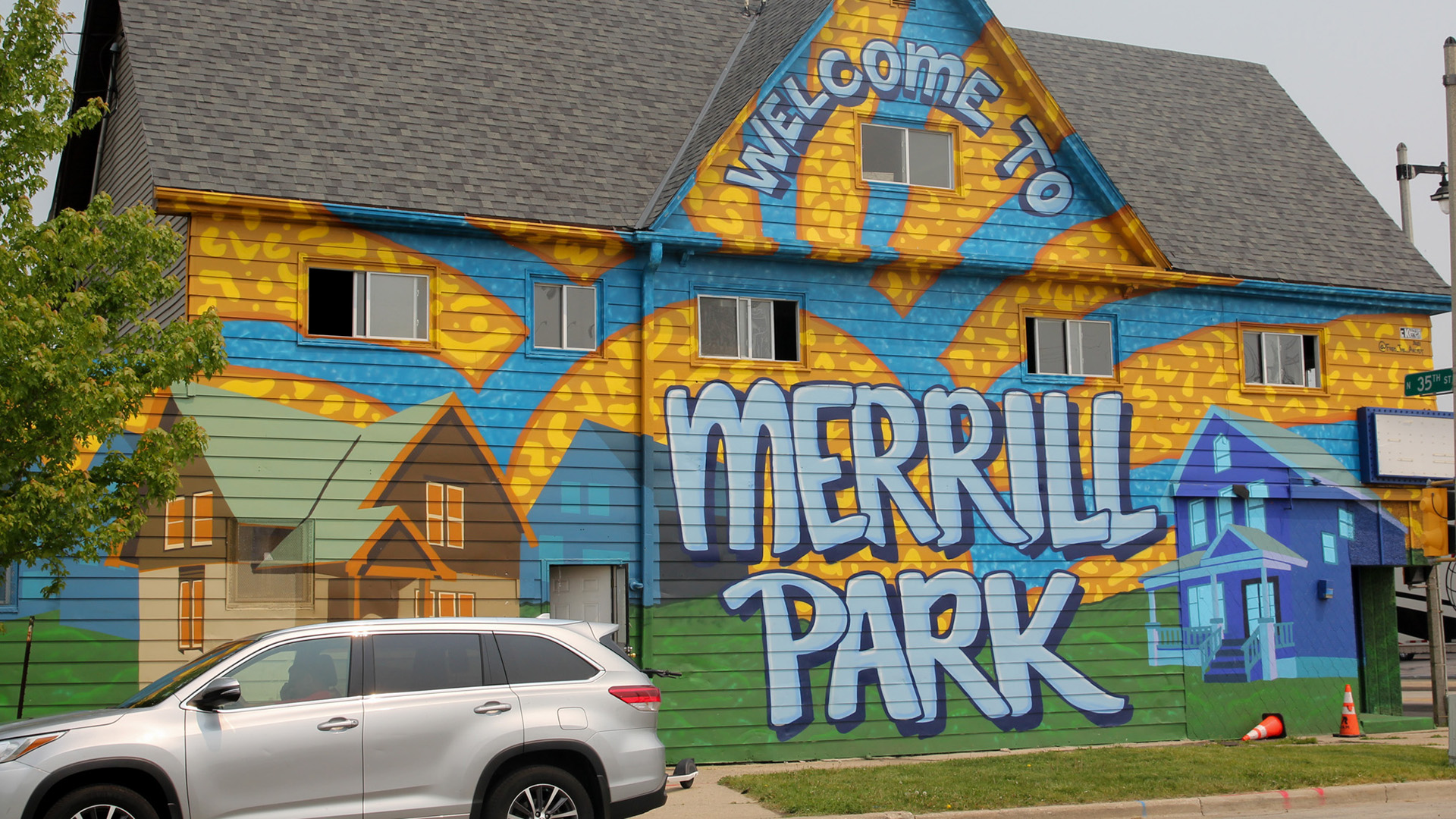
Merrill Park is one neighborhood near the Interstate 94 East-West Freeway Corridor in Milwaukee. Sherburn Merrill established the neighborhood in 1868 as general manager of the Milwaukee and St. Paul Railroad. The neighborhood’s boundaries changed when the interstate was built six decades ago, according to Near West Side Partners, a nonprofit dedicated to redeveloping the Near West Side neighborhoods of Milwaukee. (Credit: Jonmaesha Beltran / Wisconsin Watch)
The state transportation department rejected keeping the highway at six lanes after a 2016 department-commissioned study said the option would not effectively accommodate future traffic volumes in 2040.
But years of research shows that widening highways can increase traffic volume by encouraging more people to drive.
In a decade advocating for alternatives, Adams said he’s become “fairly jaded” and “just resigned” that the state would widen I-94 no matter what.
“What we as neighbors said, what people at their community meetings said — it was just a foregone conclusion that they were going to extend it regardless of any other findings or input from the community,” Adams said.
Residents widely agree that I-94 needs some reconstruction, but the neighborhoods surrounding it also need improvements, Adams said.
“We need some investments from the state to improve connections from our neighborhood, which is completely surrounded by the freeway, to surrounding neighborhoods and surrounding amenities,” Adams said, “and we also need investments in those amenities, whether it’s the parks or the bike trails or transit. And there’s just never any response. It’s just silence.”
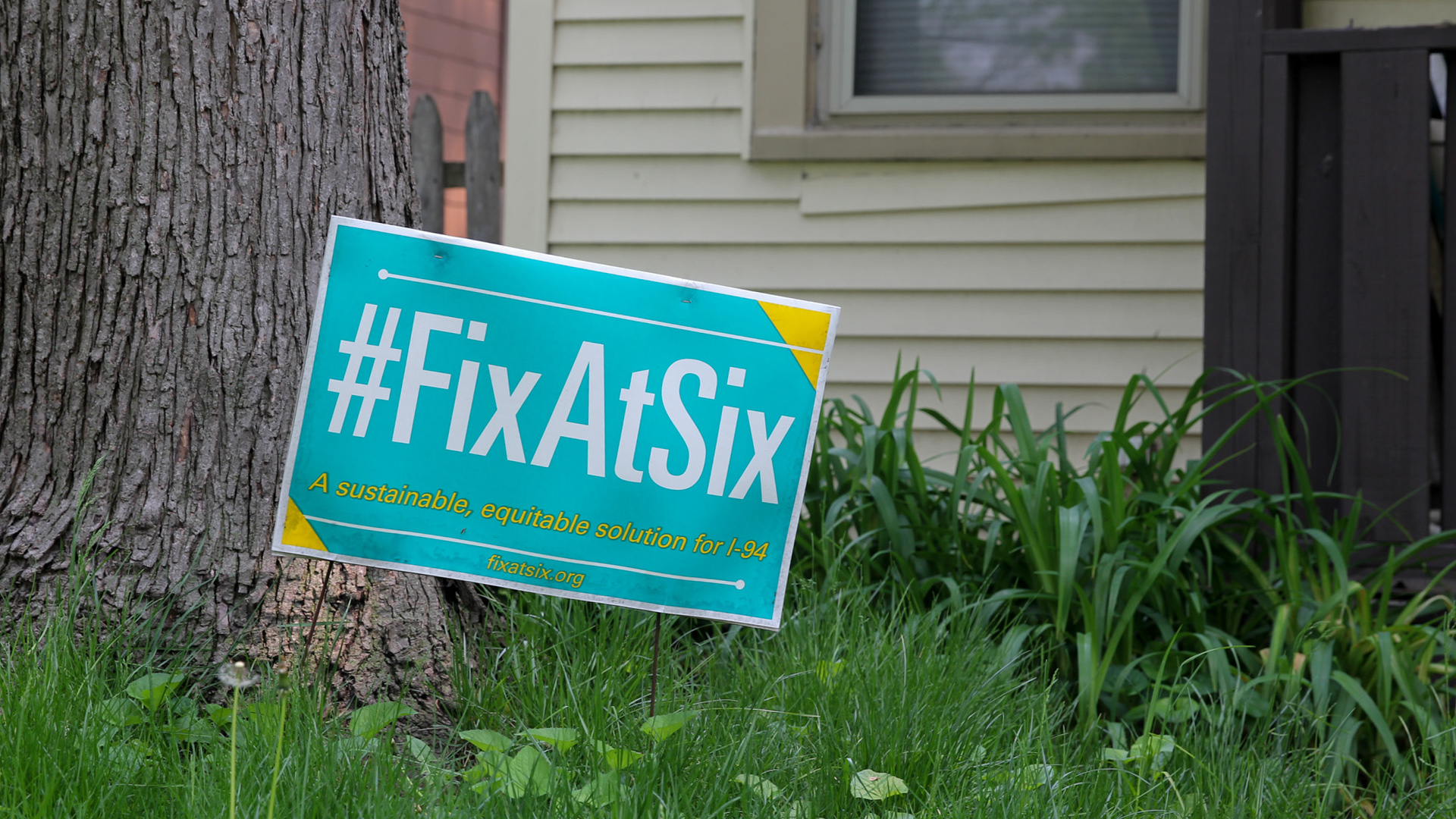
A “Fix at Six” yard signs stands on a law in a Milwaukee neighborhood on May 18, 2023. Opponents of the state’s proposed Interstate 94 East-West Freeway corridor expansion are pushing an alternative plan by that name. It calls for the state to still repair — but not widen — a 3.5-mile section of freeway while also investing in public transit and cycling infrastructure. Opponents of the state’s plan say it benefits suburban commuters at the expense of Milwaukee residents. (Credit: Jonmaesha Beltran / Wisconsin Watch)
The state department of transportation plan includes additional bike lanes and a one-time $25 million funding for public transportation, but activists say more is needed at a time of deep fiscal challenges for the Milwaukee County Transit System that threaten service for thousands of bus riders.
“You can always find a billion dollars for highway expansion,” Gregg May, the transportation policy director at 1000 Friends Wisconsin, said during a 2022 public hearing. “But when the Milwaukee County Transit System is facing a fiscal cliff, we can’t seem to find the money for that.”
Jonah Chester contributed to this report. The nonprofit Wisconsin Watch collaborates with Milwaukee Neighborhood News Service, WPR, PBS Wisconsin, other news media and the University of Wisconsin-Madison School of Journalism and Mass Communication. All works created, published, posted or disseminated by Wisconsin Watch do not necessarily reflect the views or opinions of UW-Madison or any of its affiliates.
 Passport
Passport




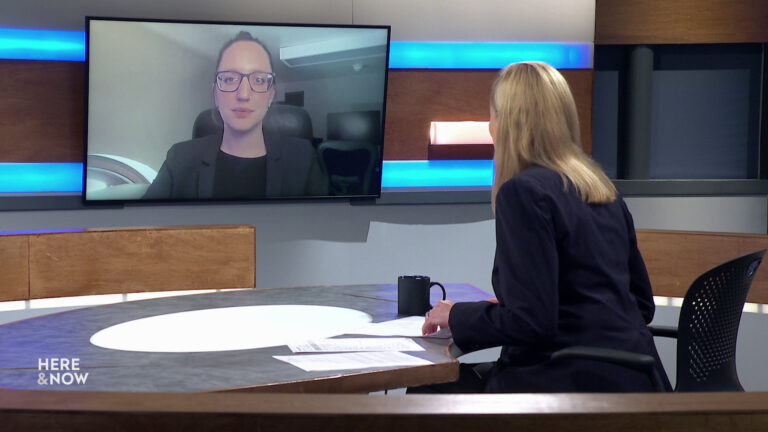
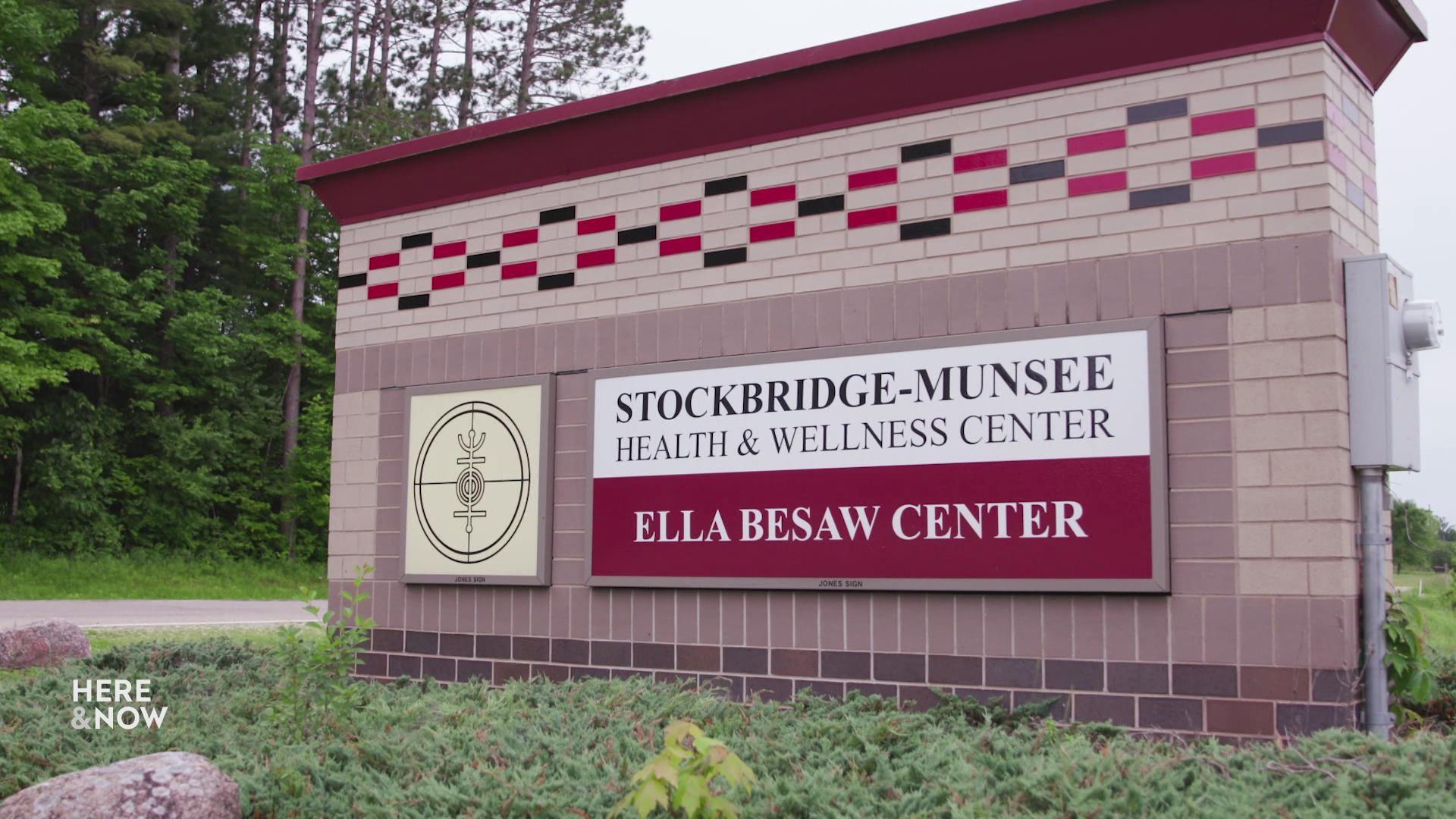
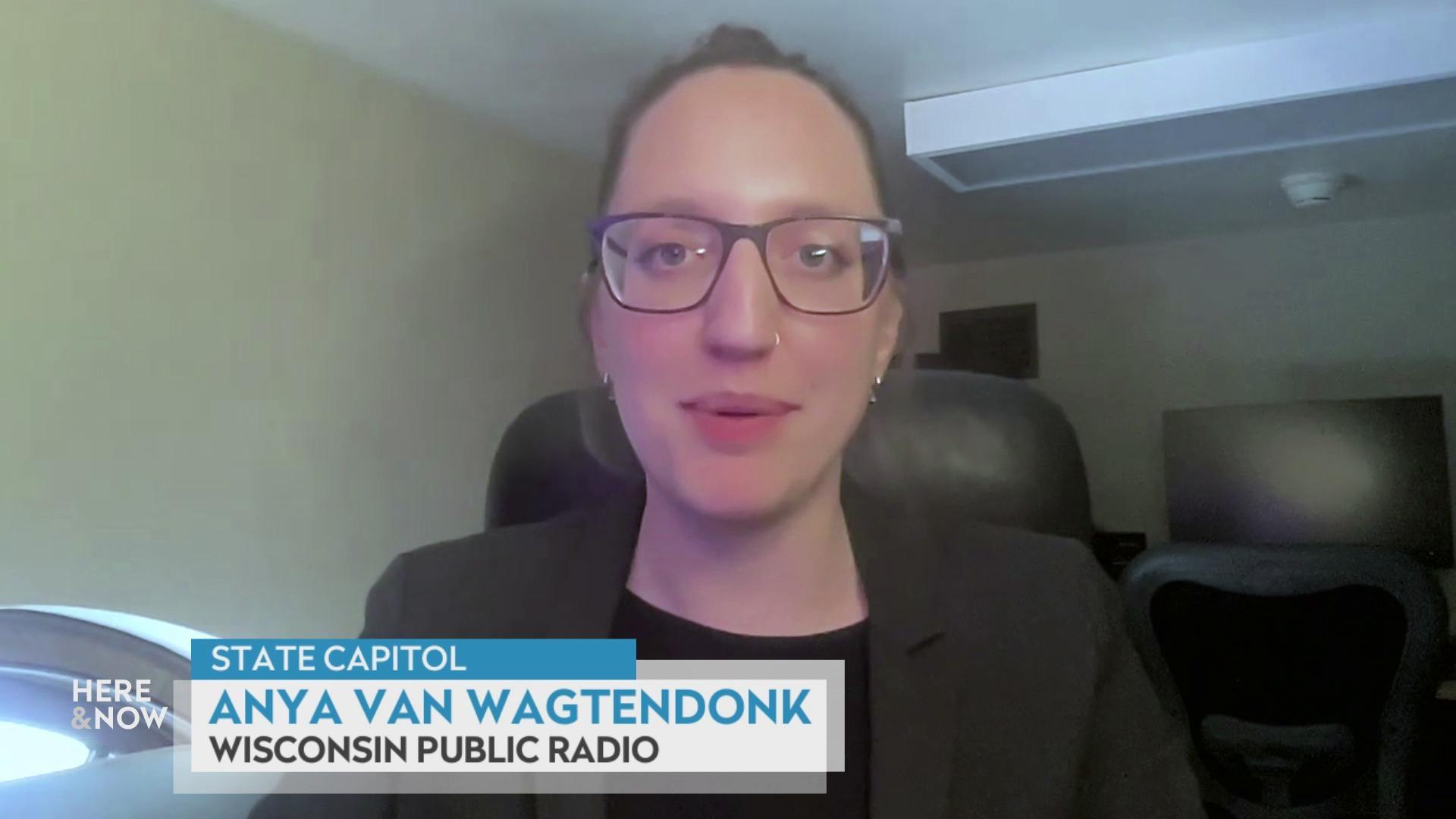
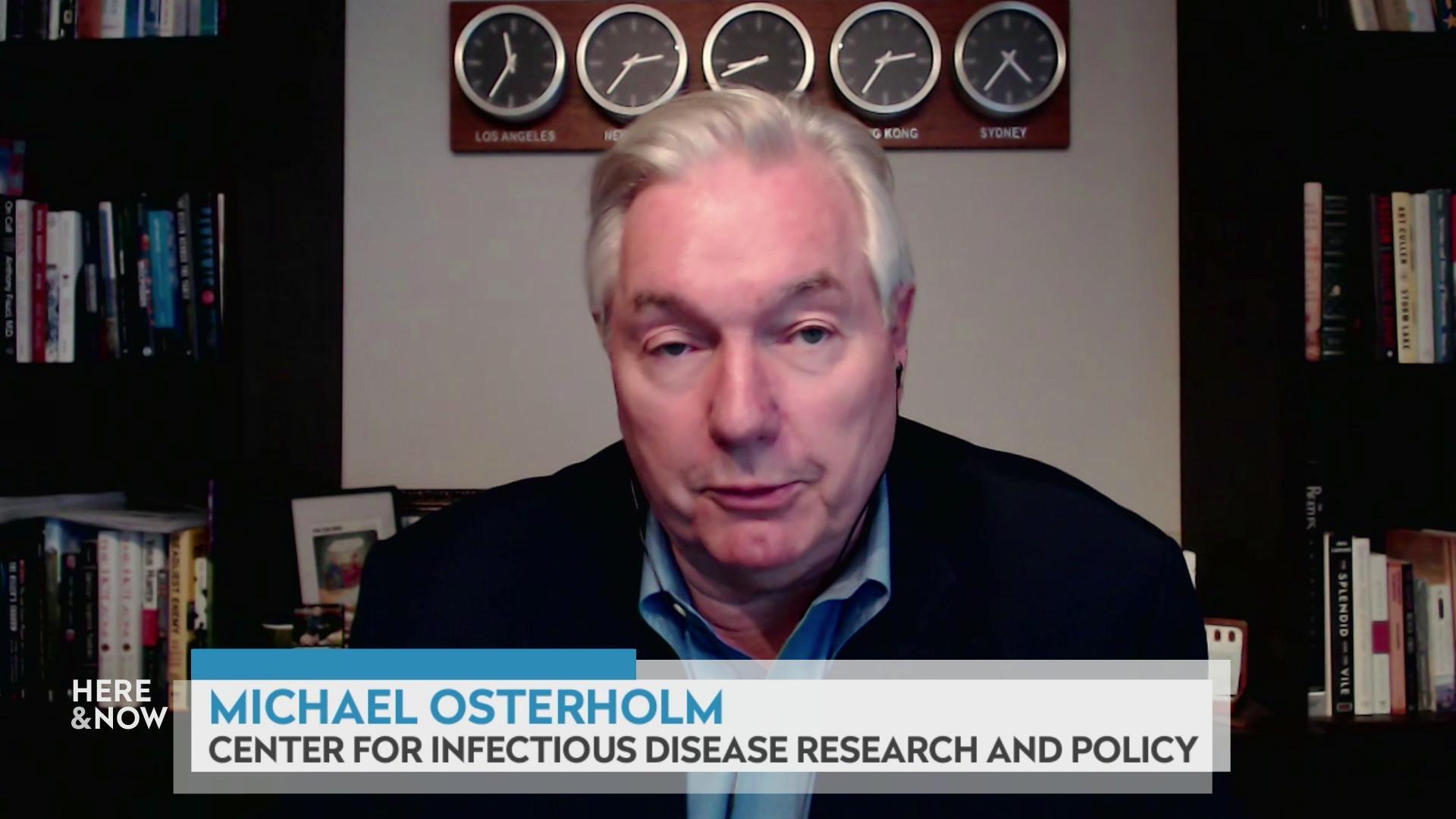
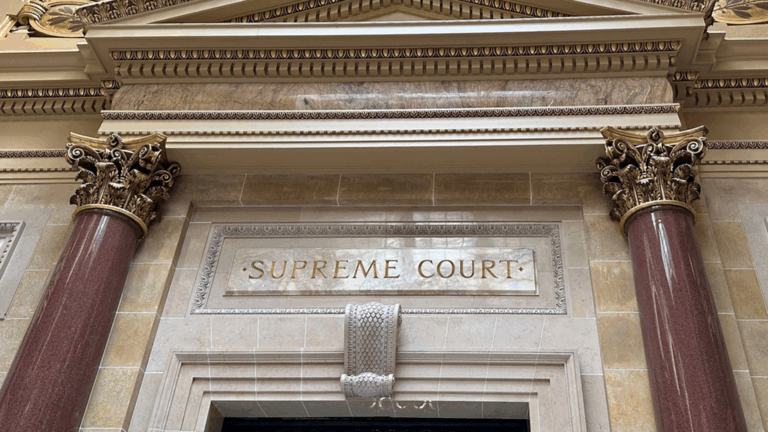
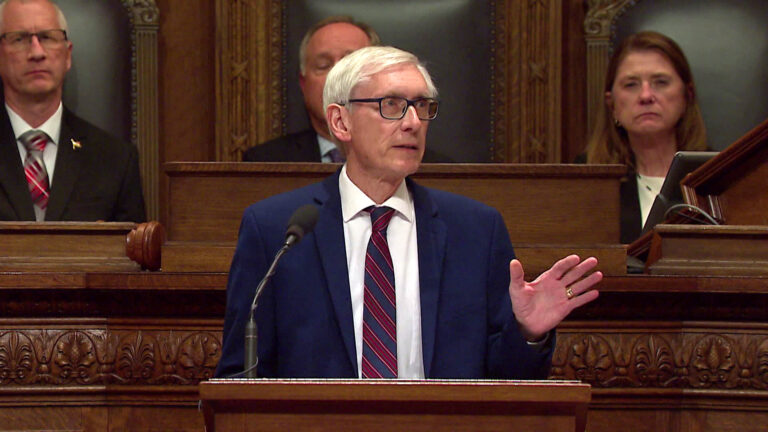

Follow Us